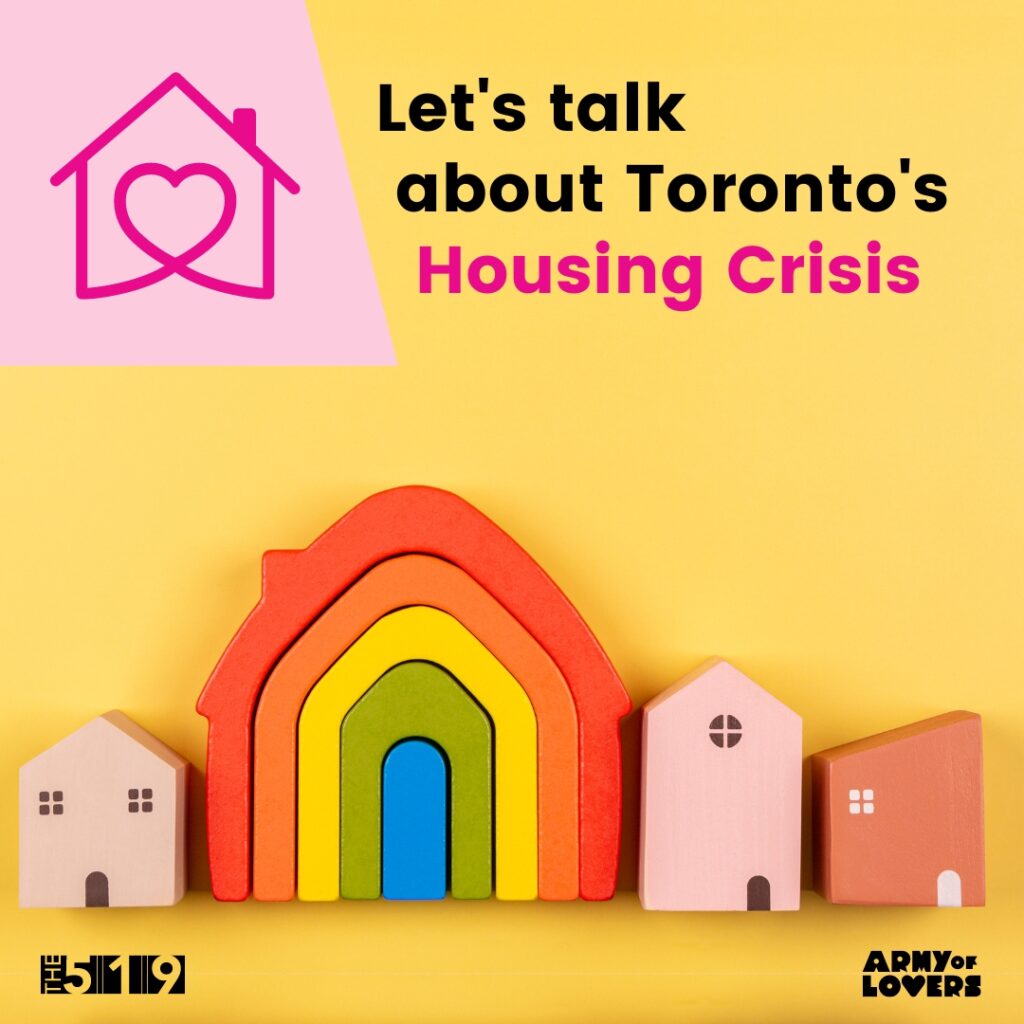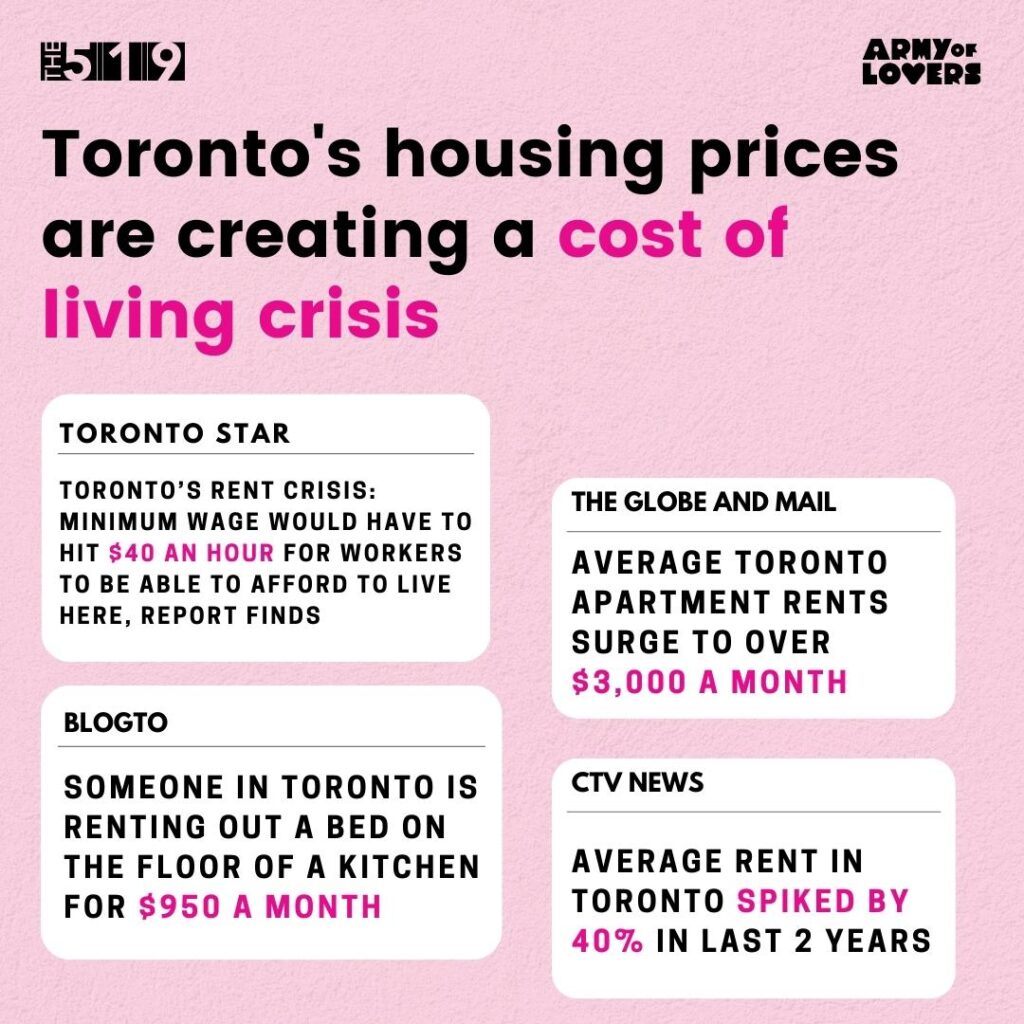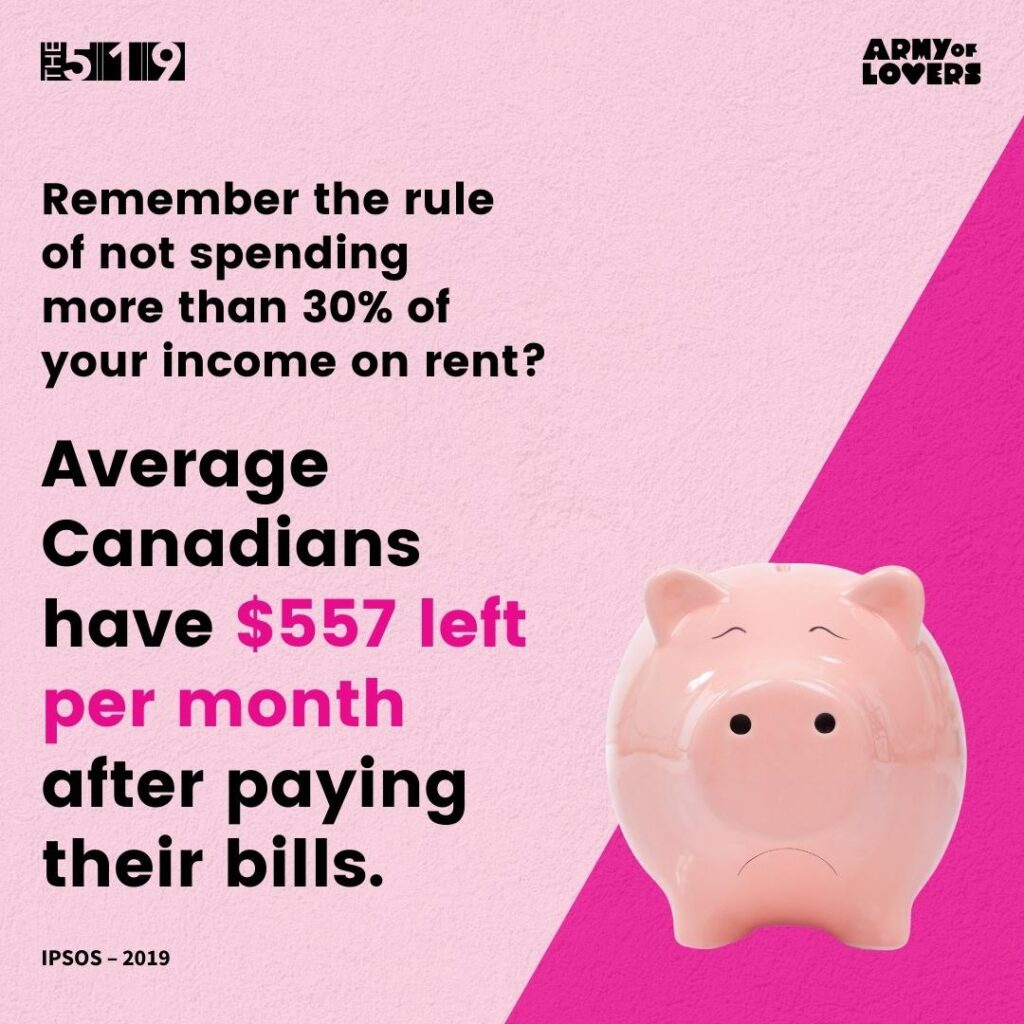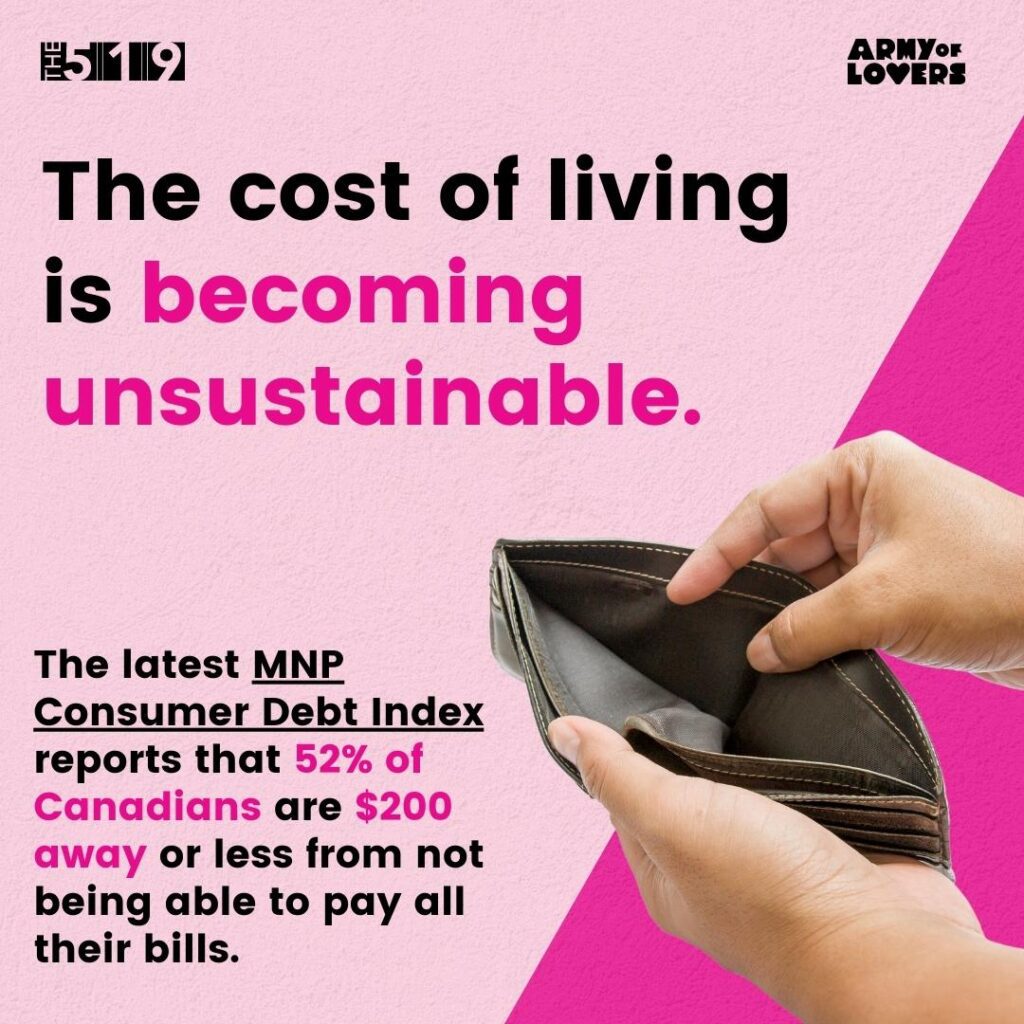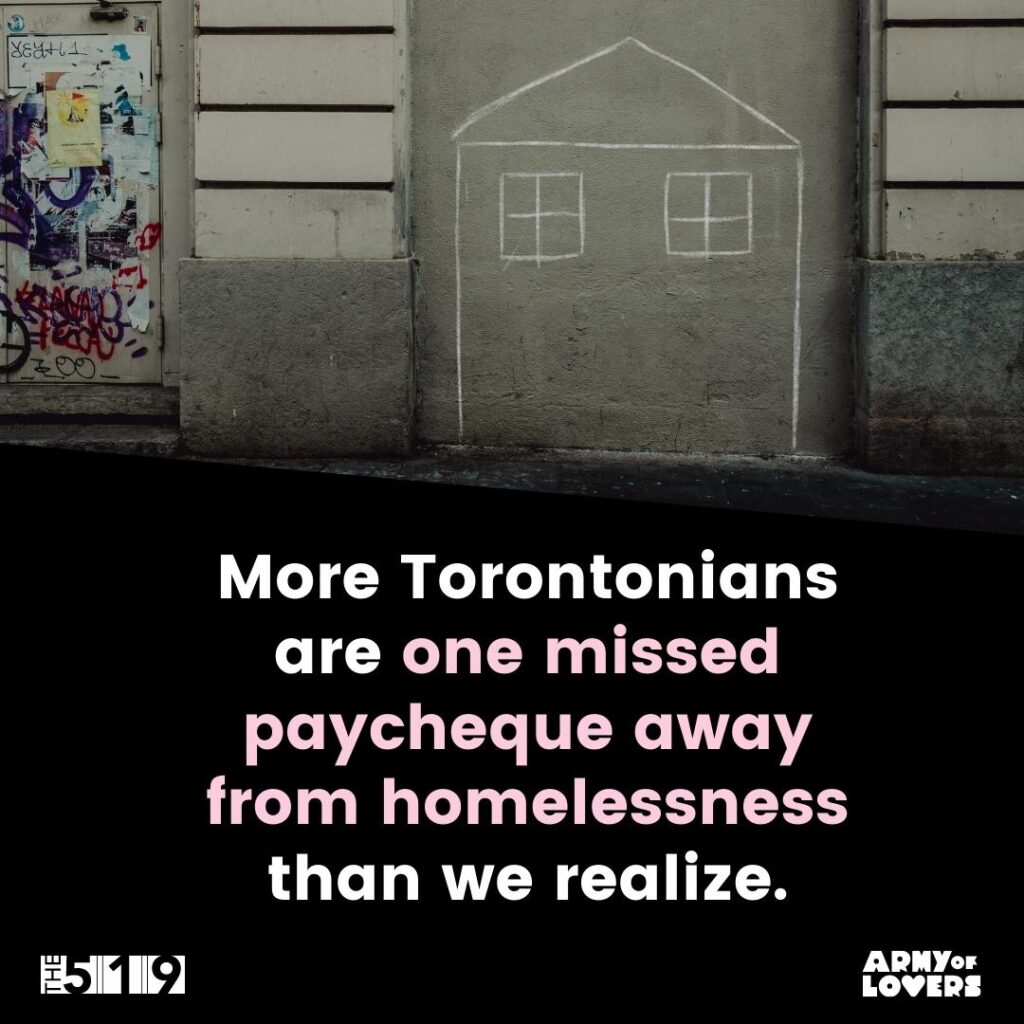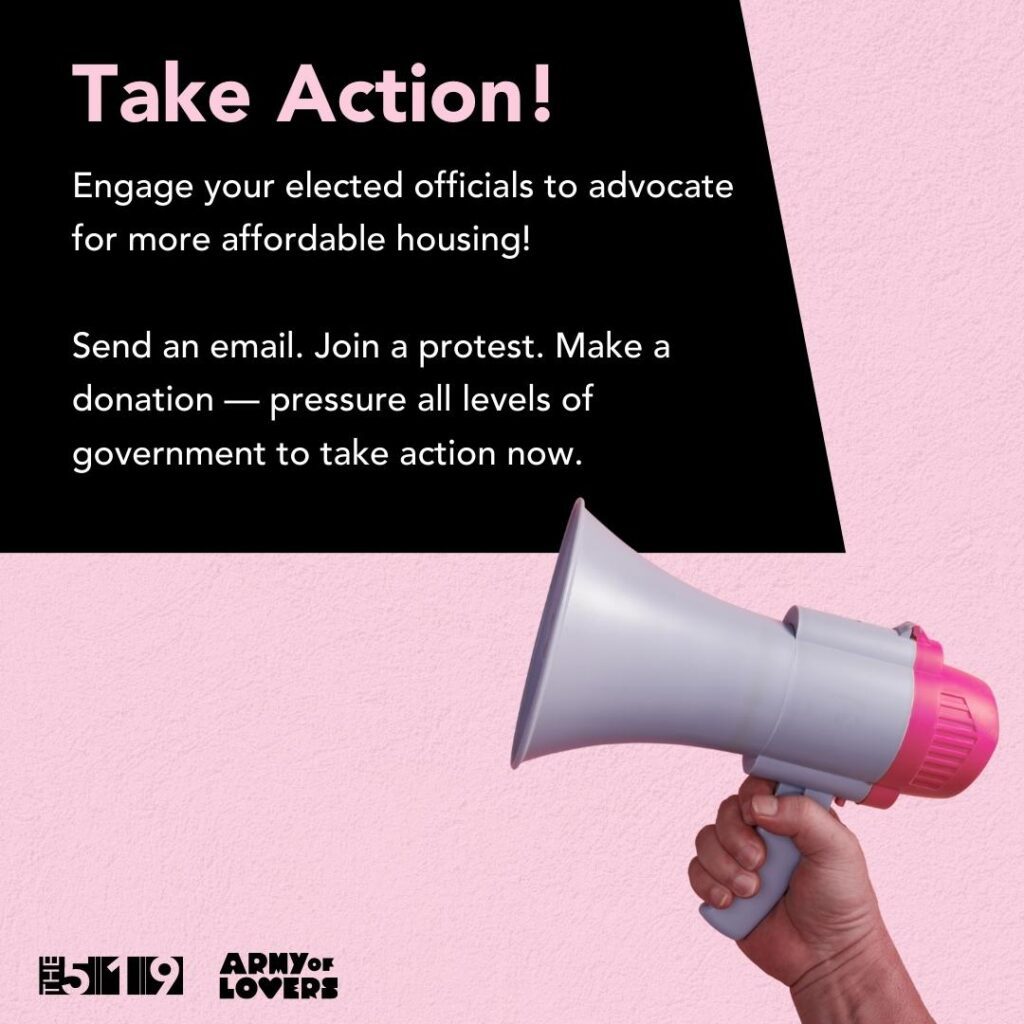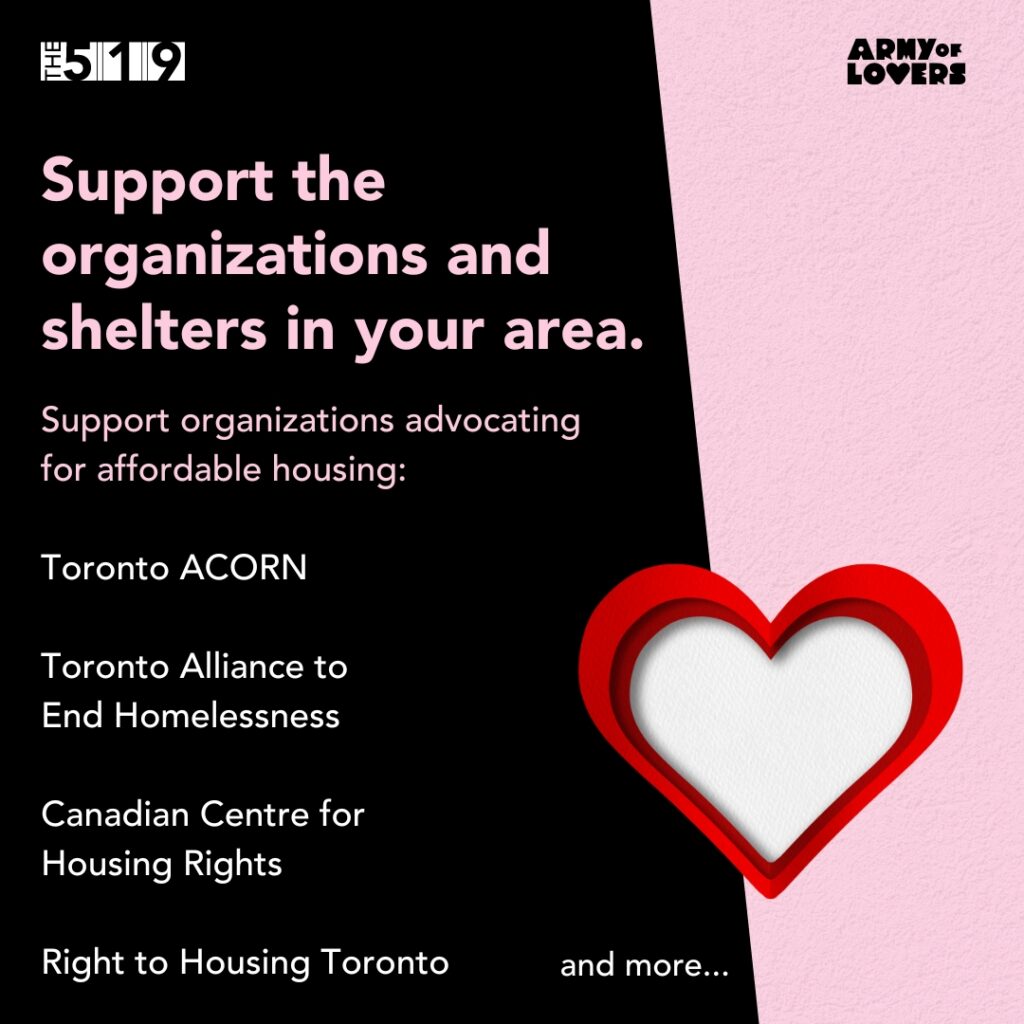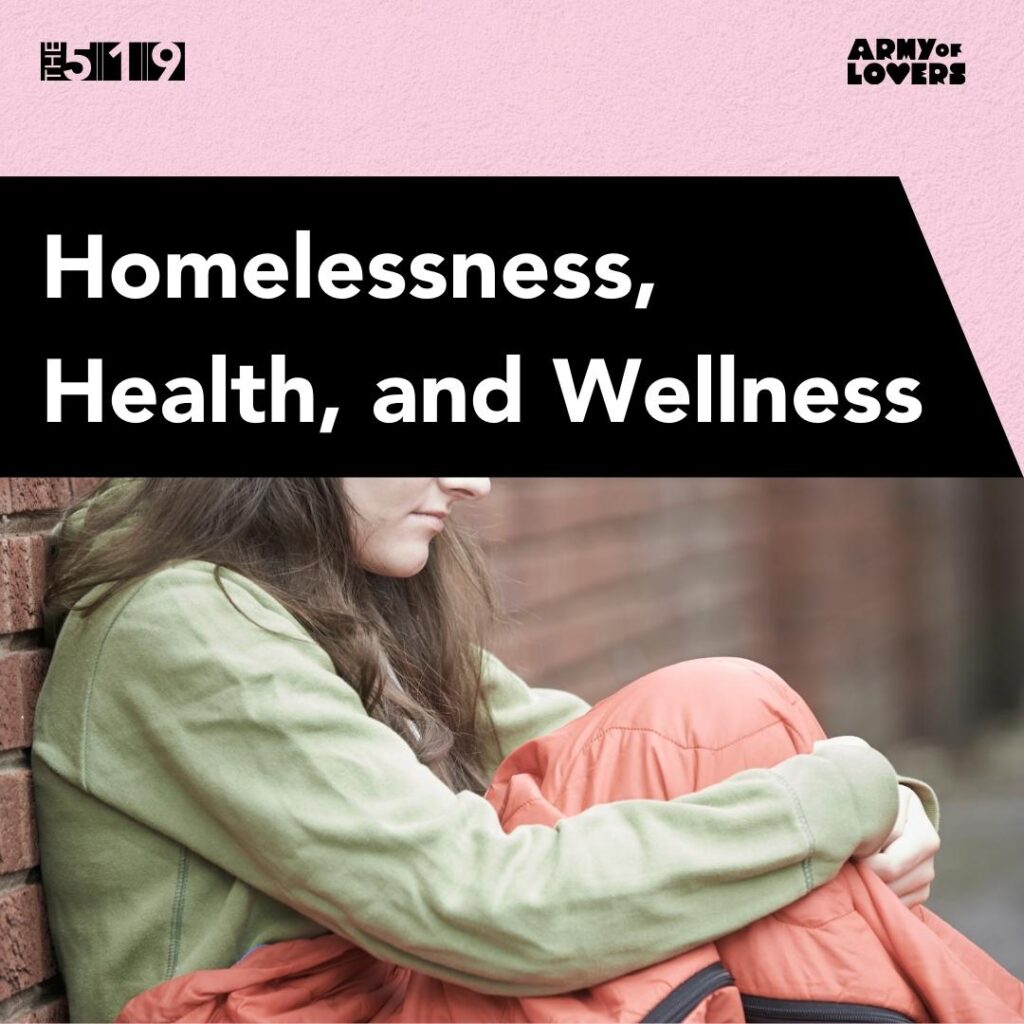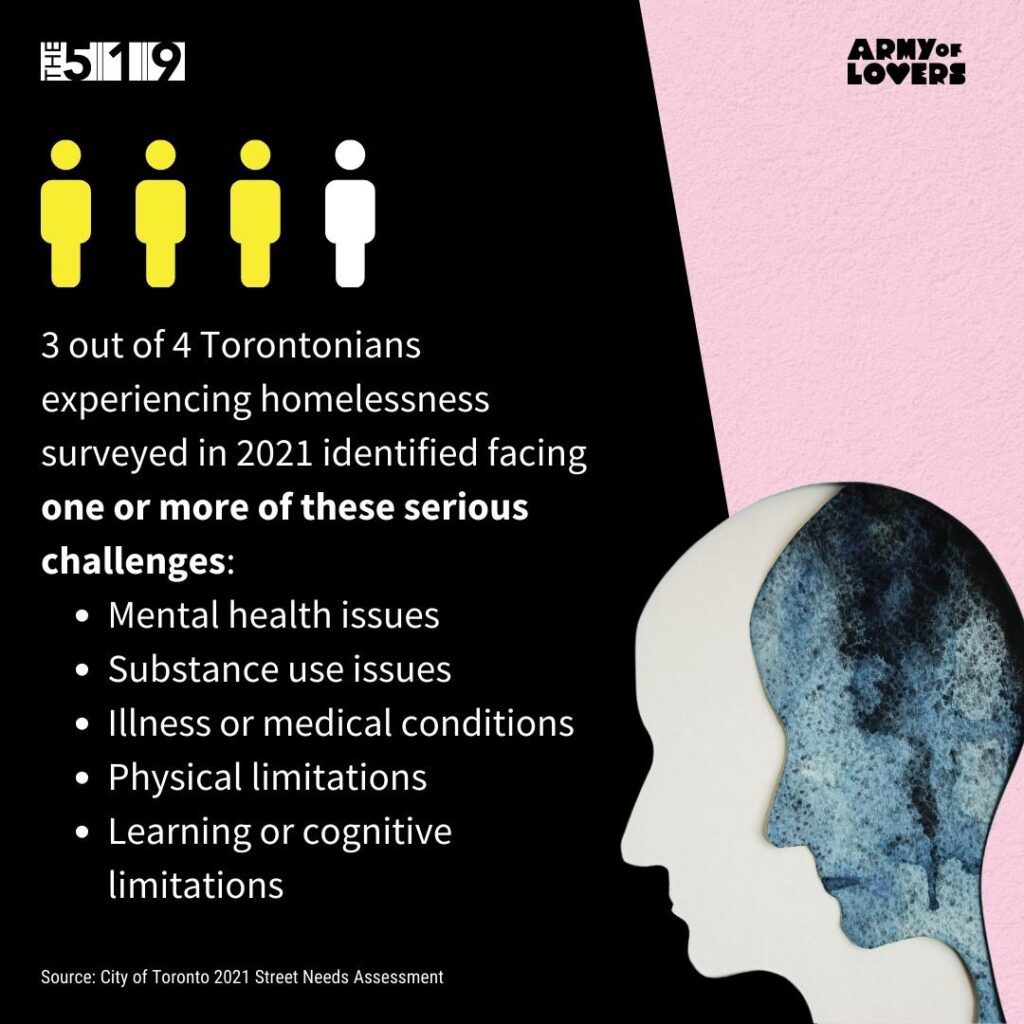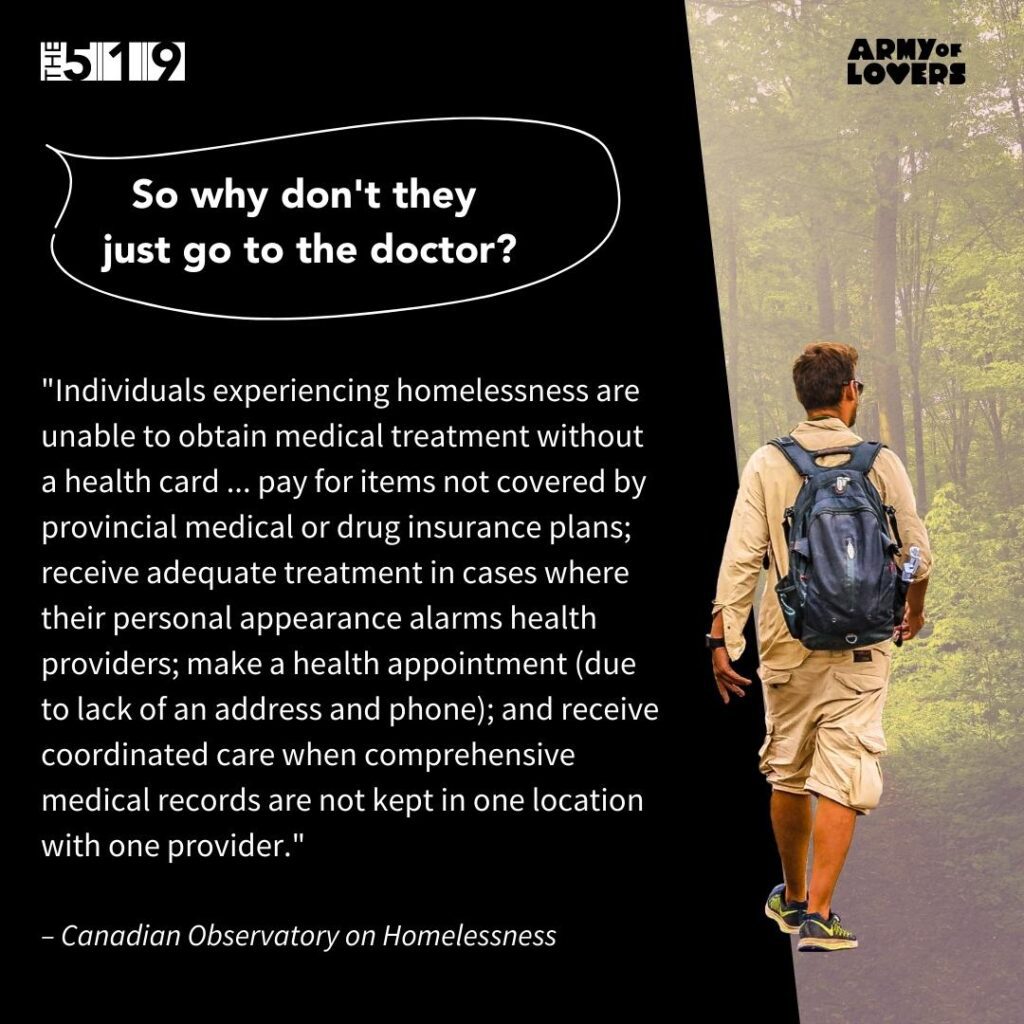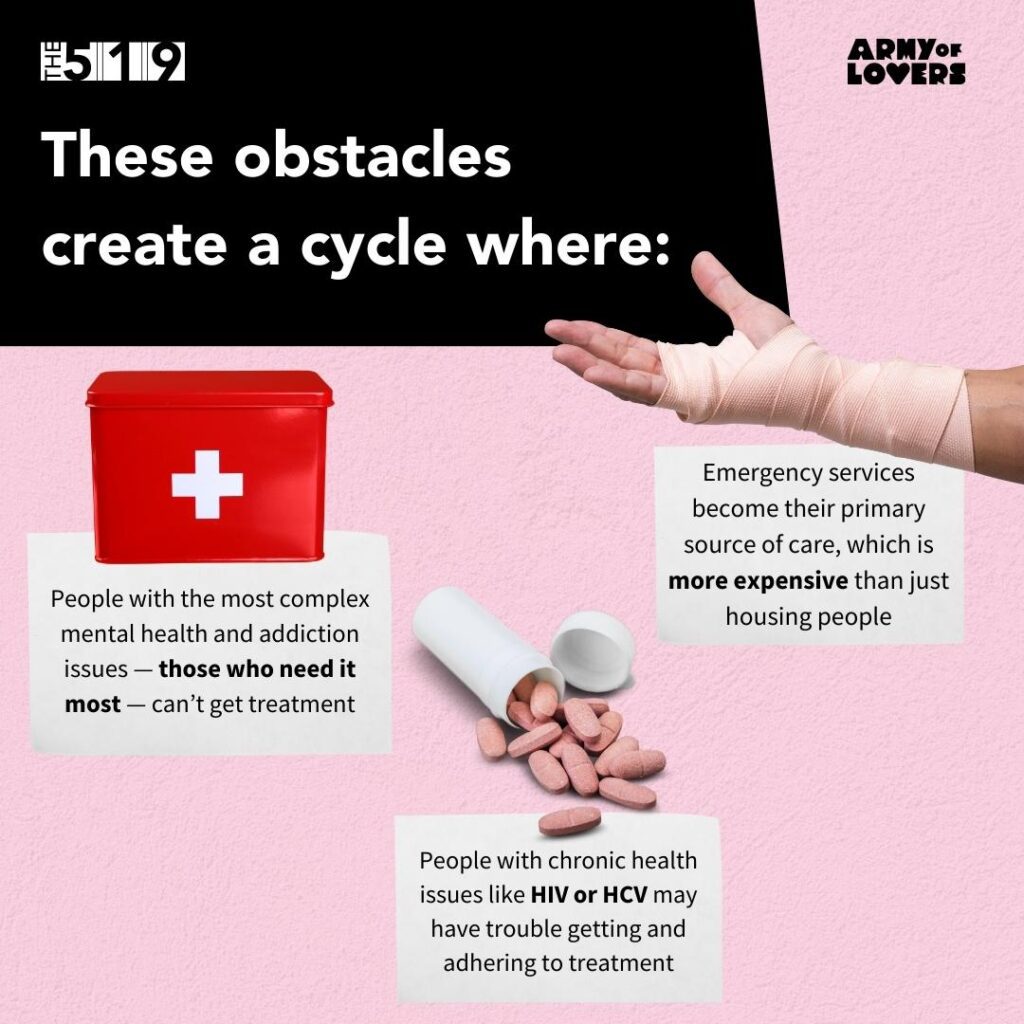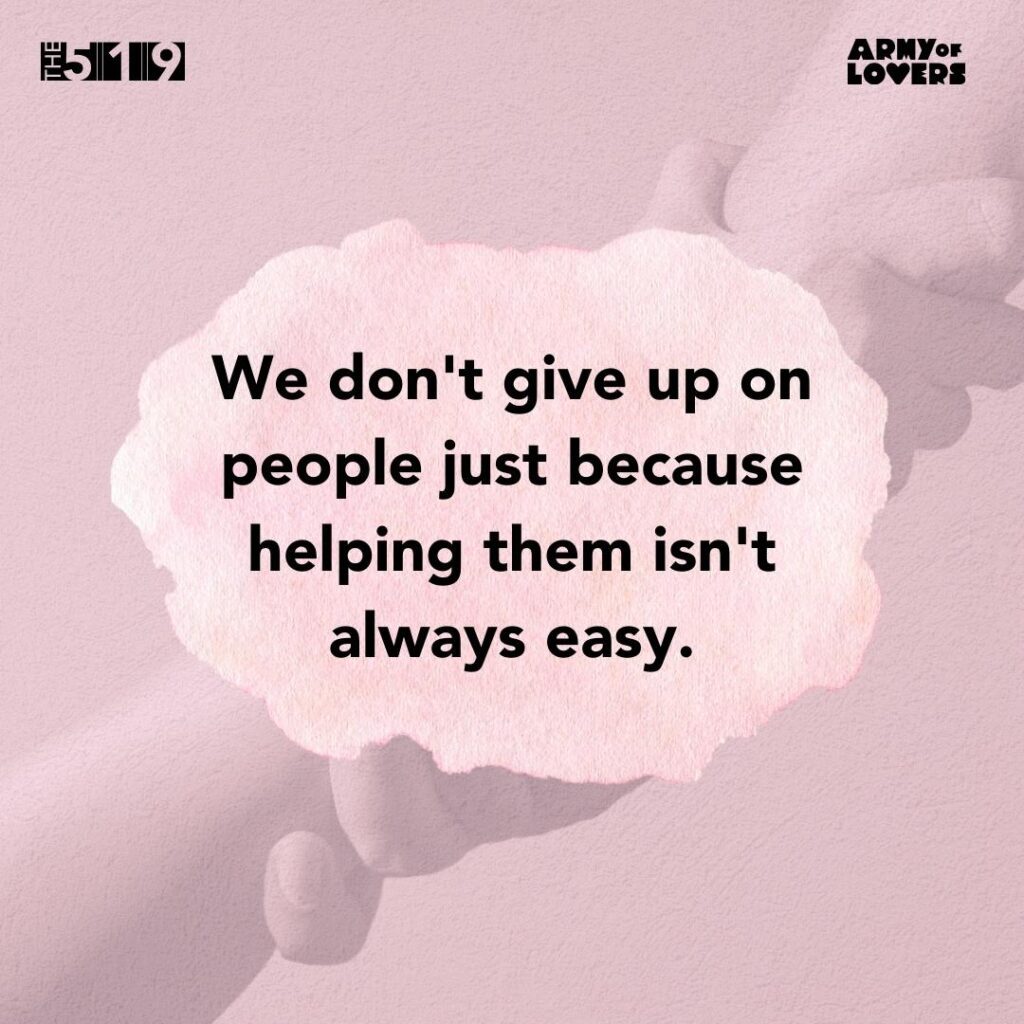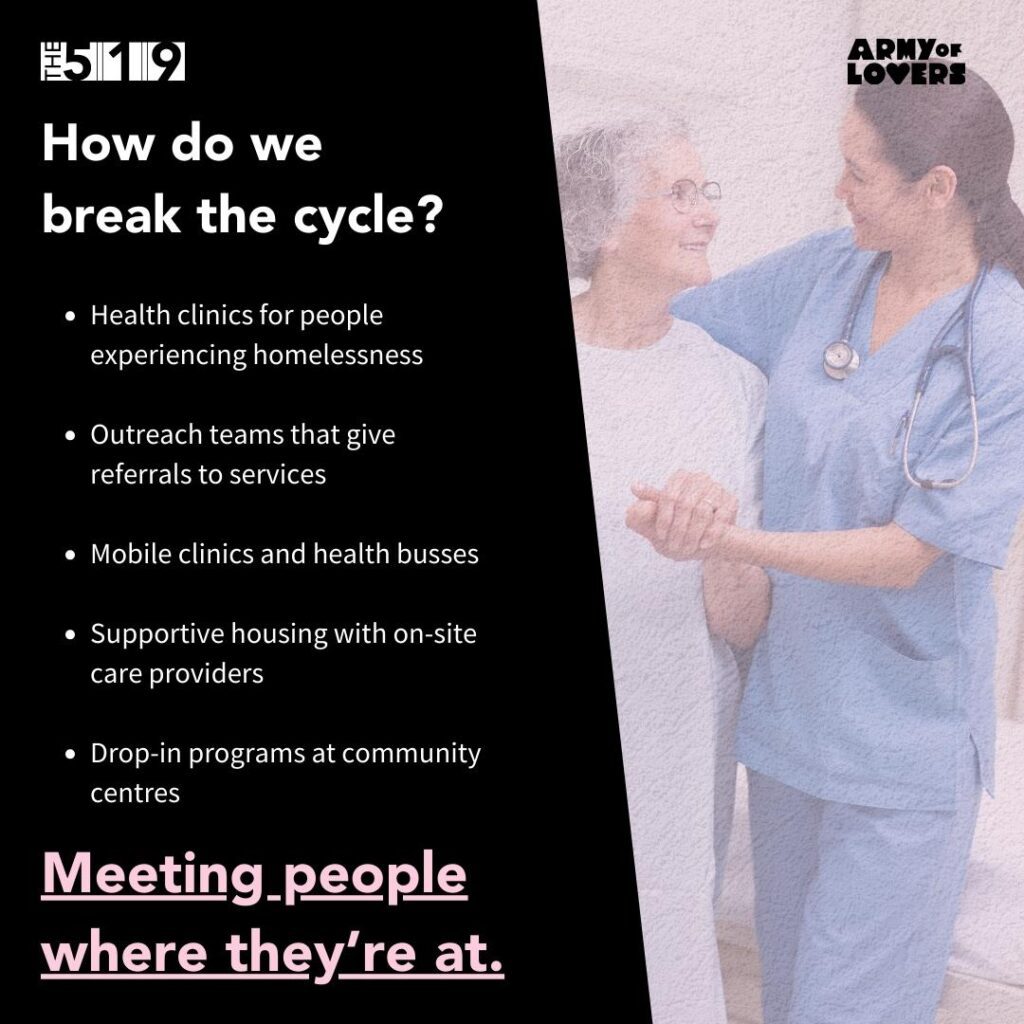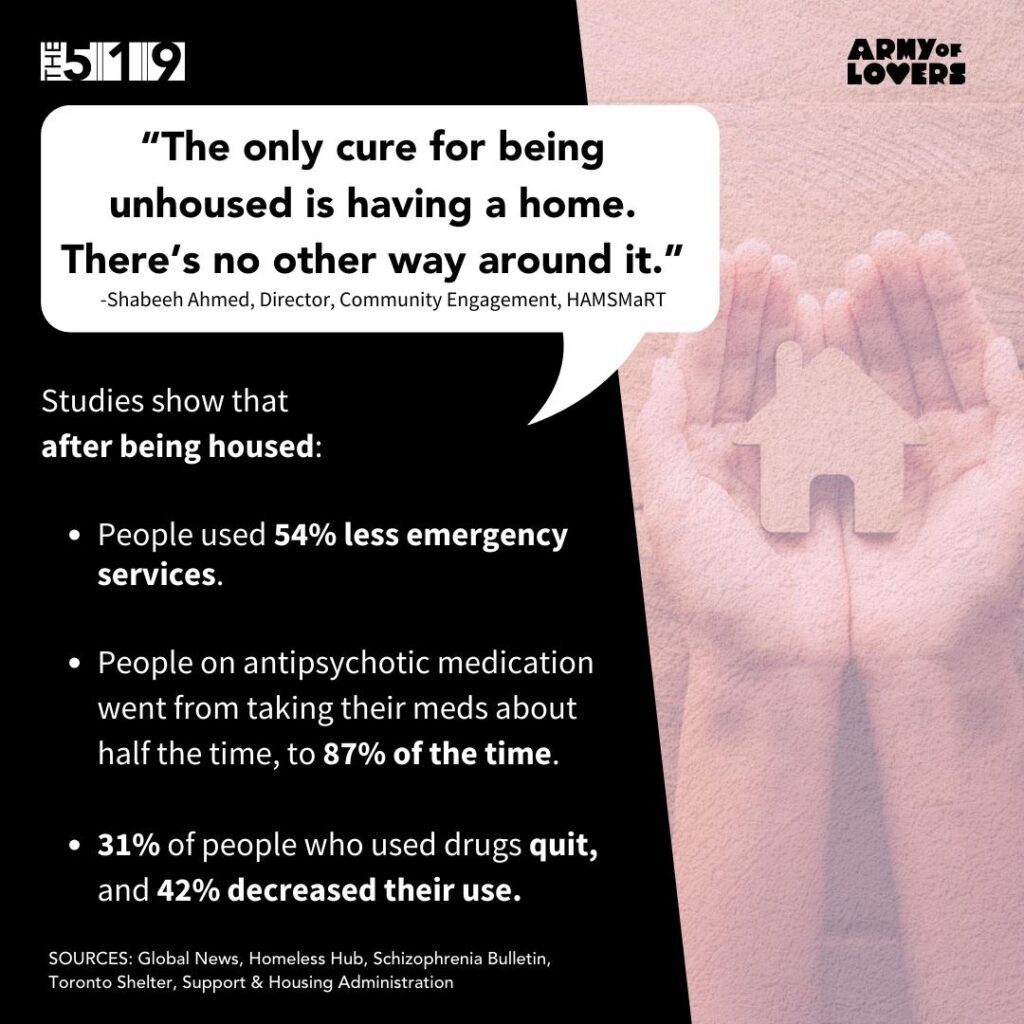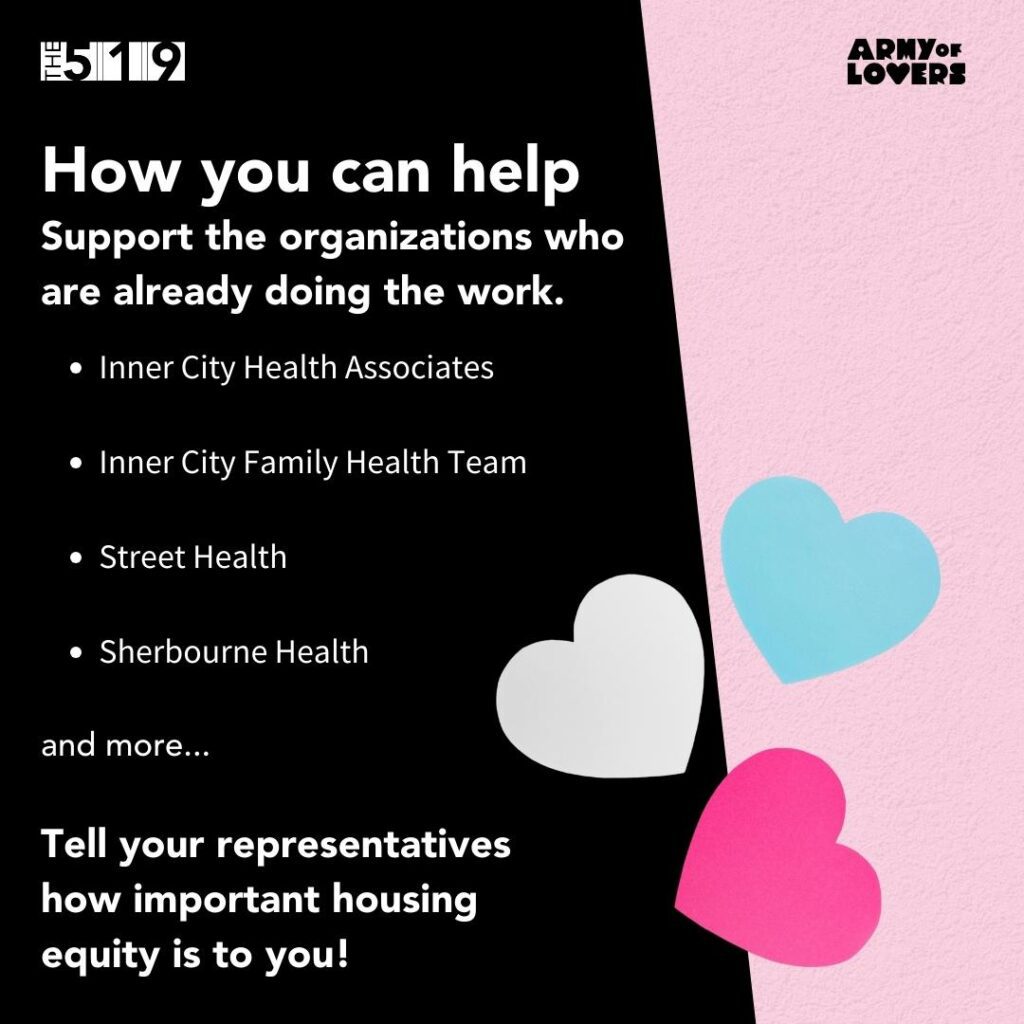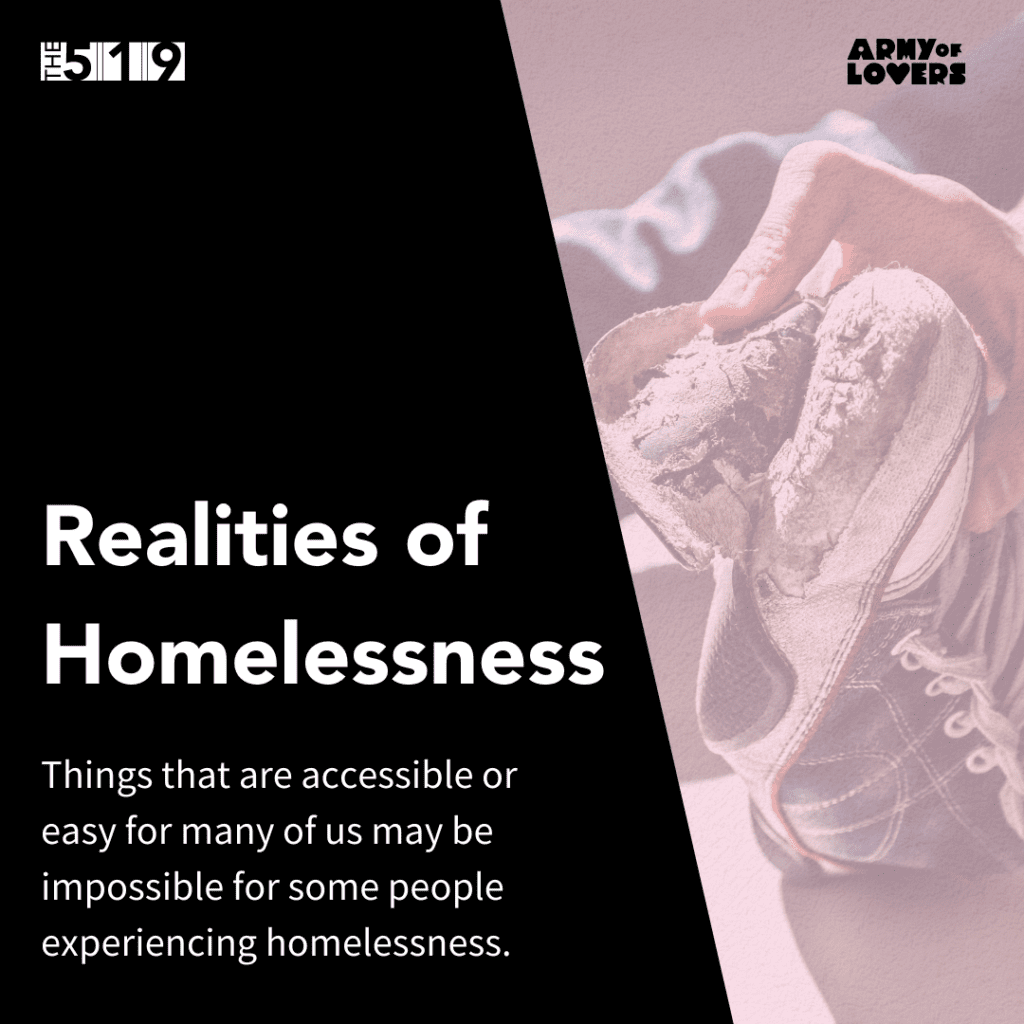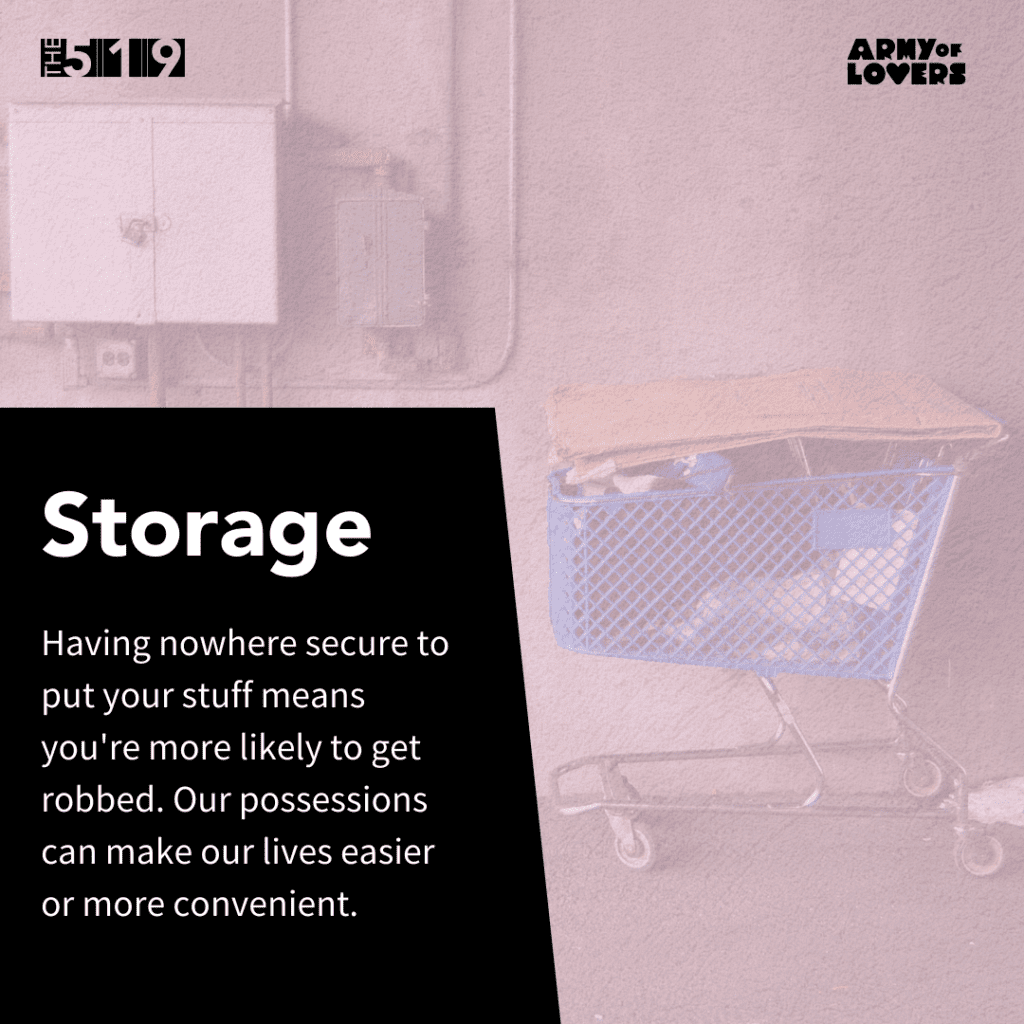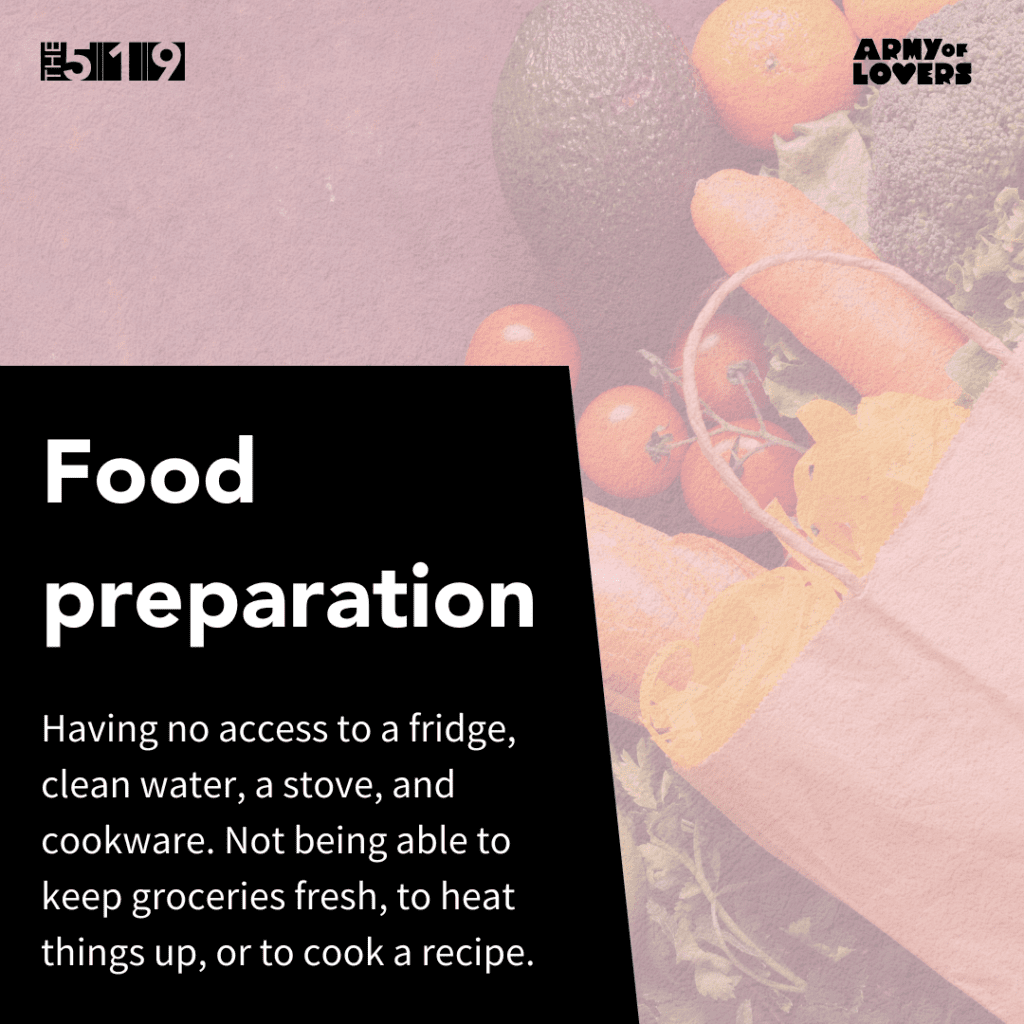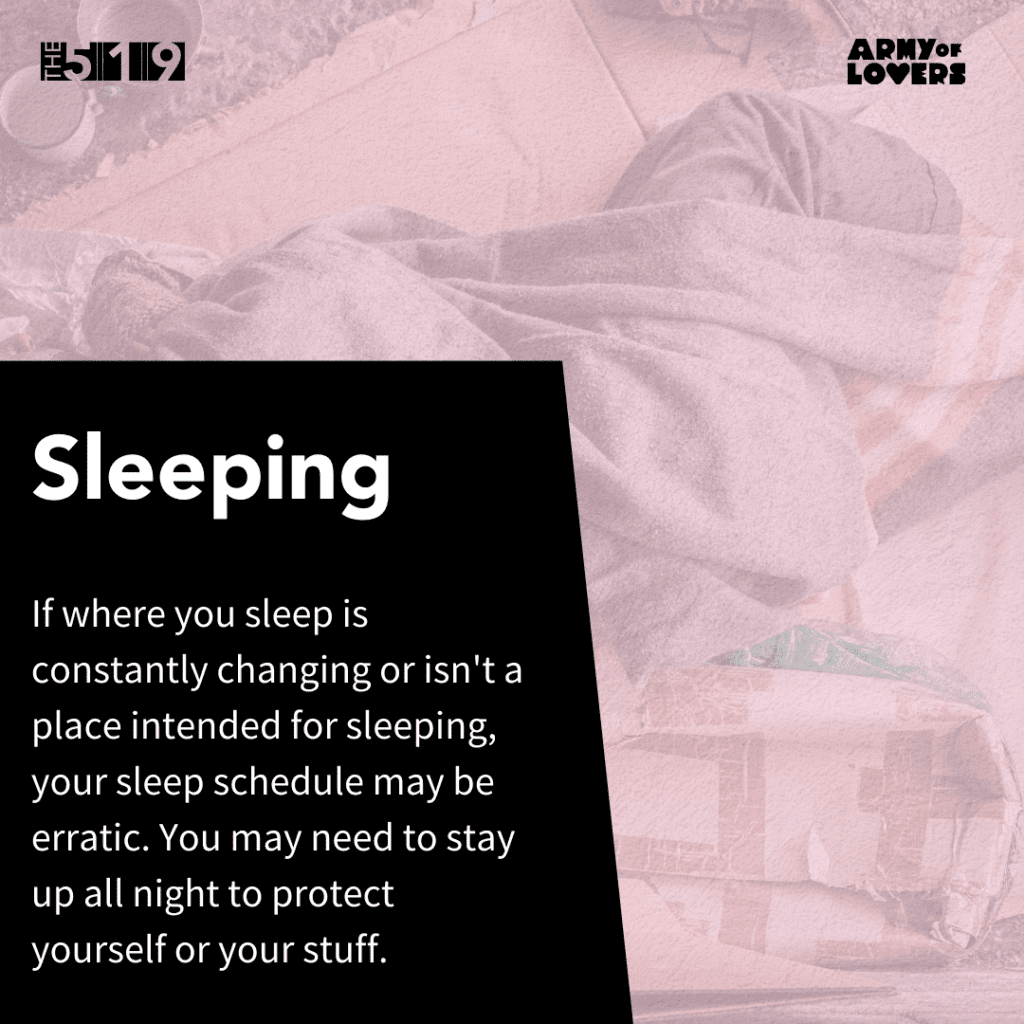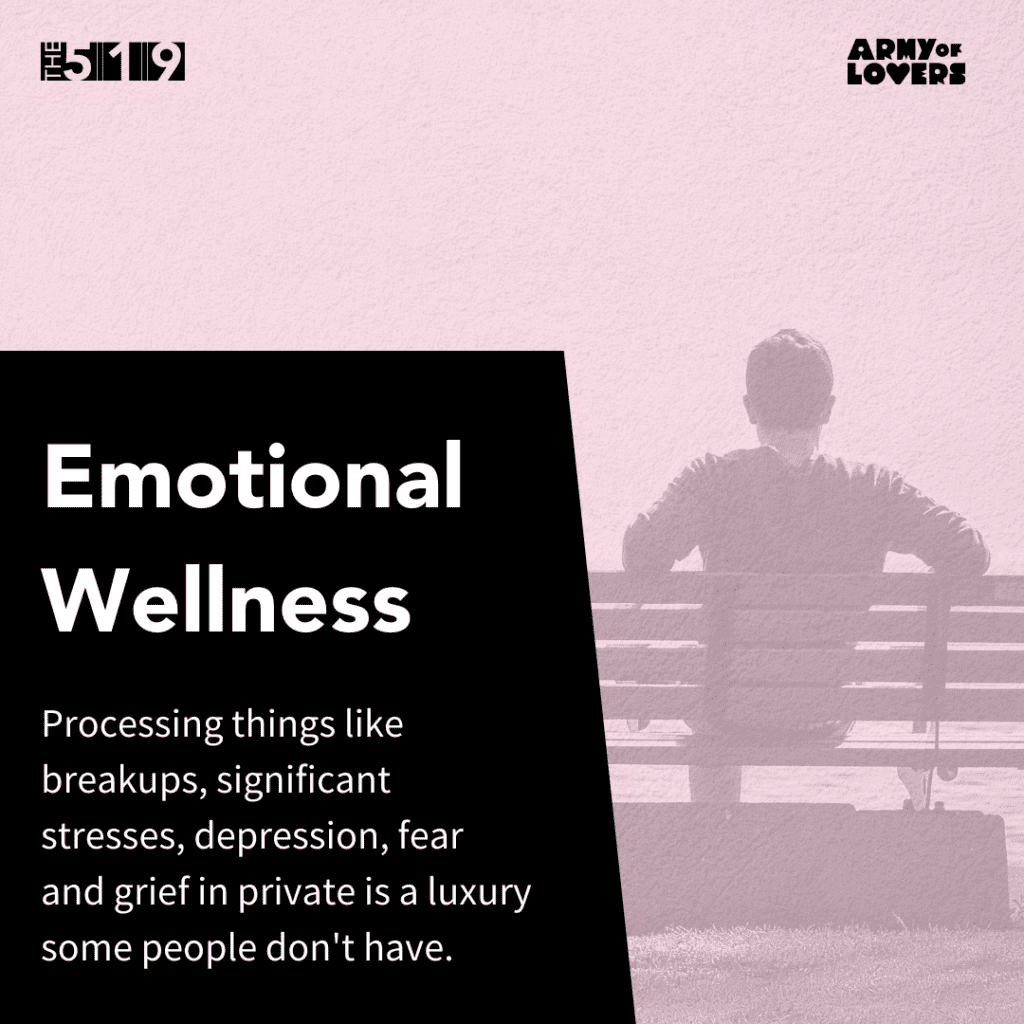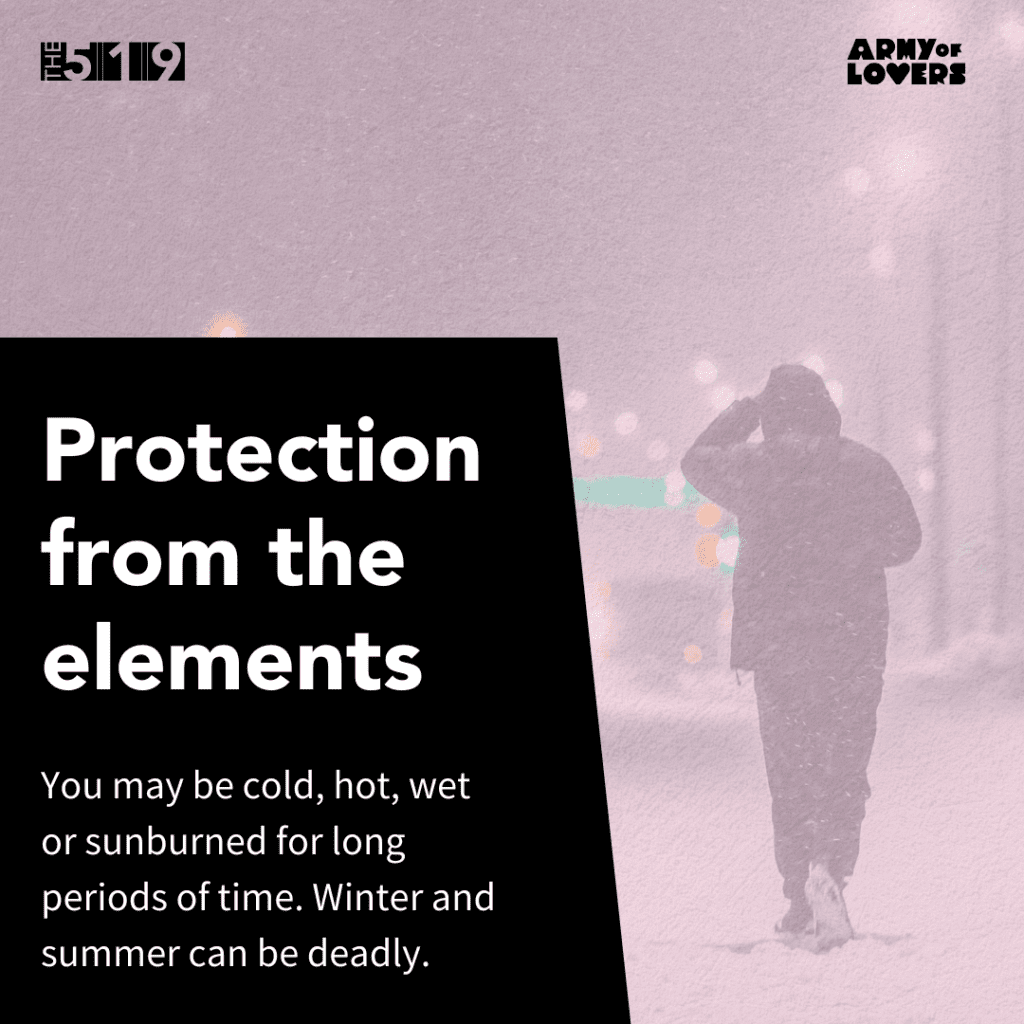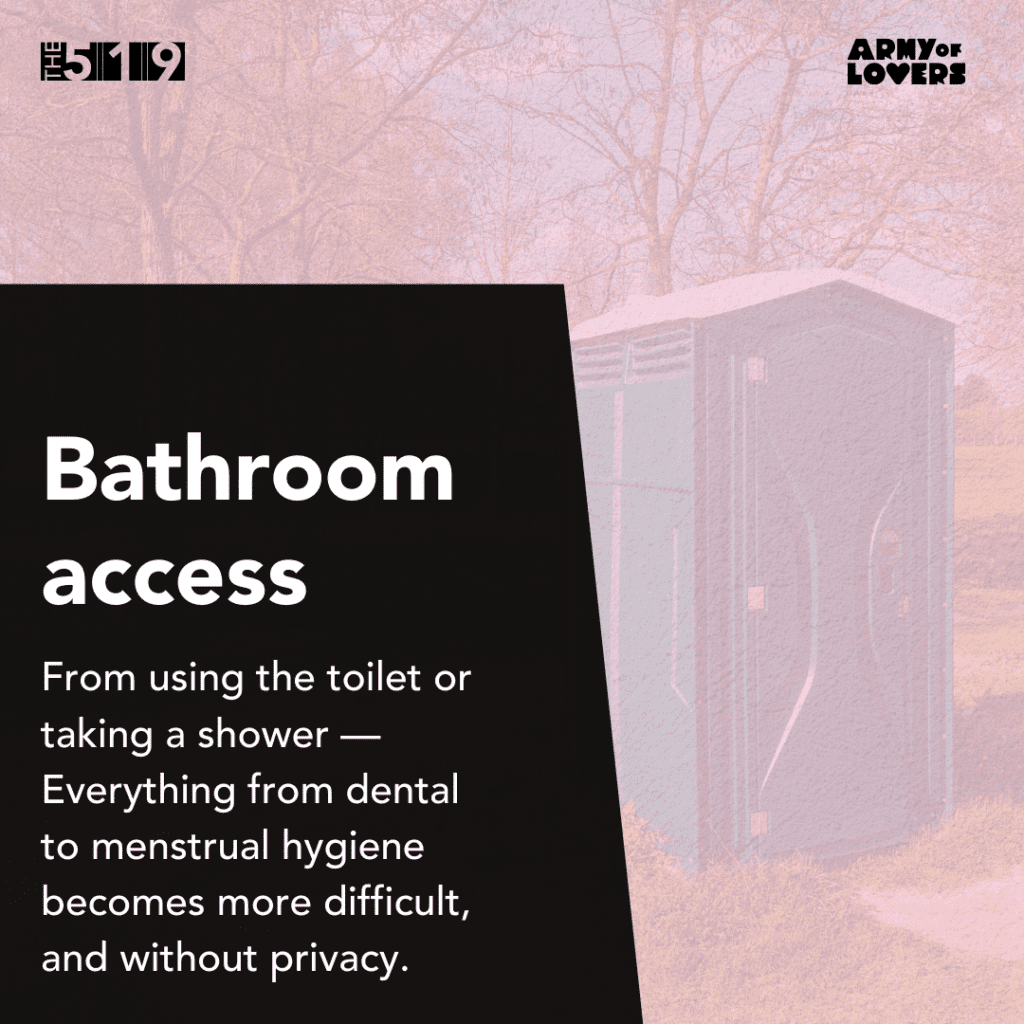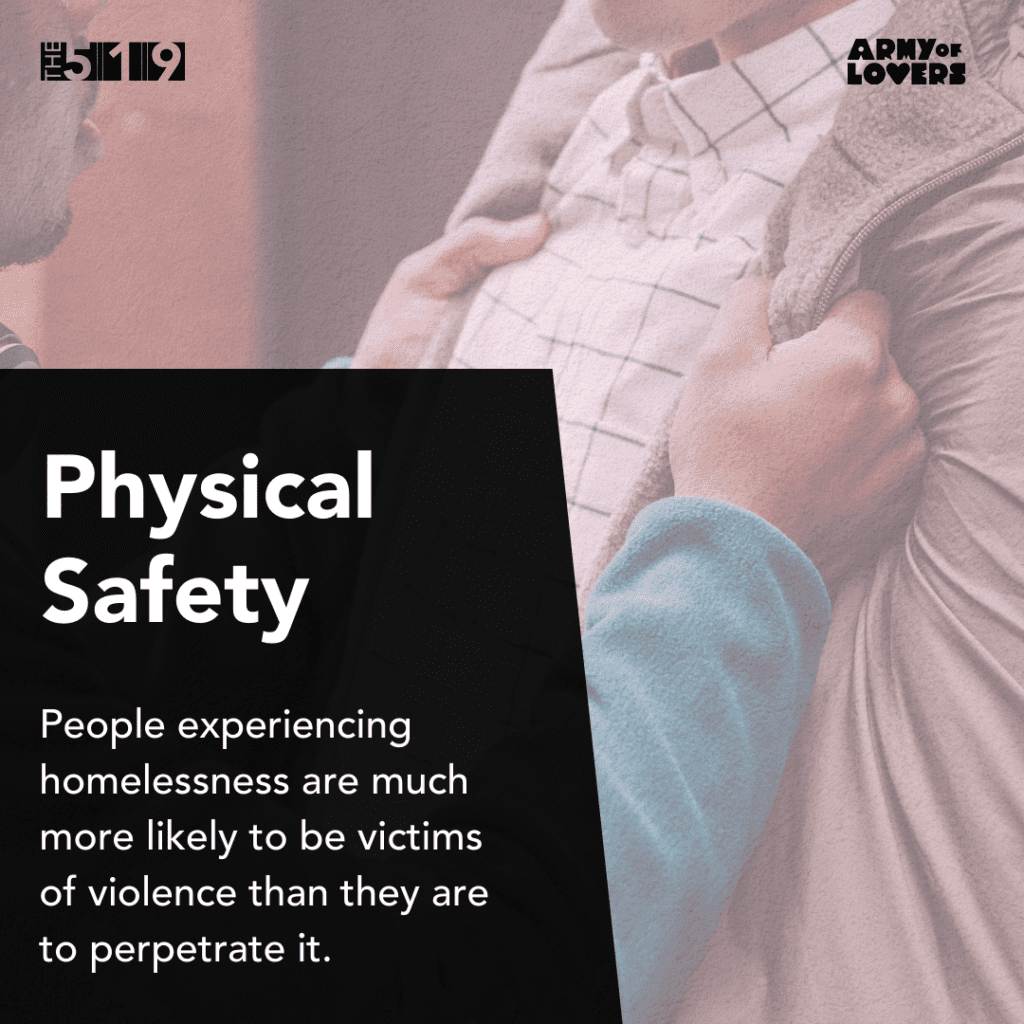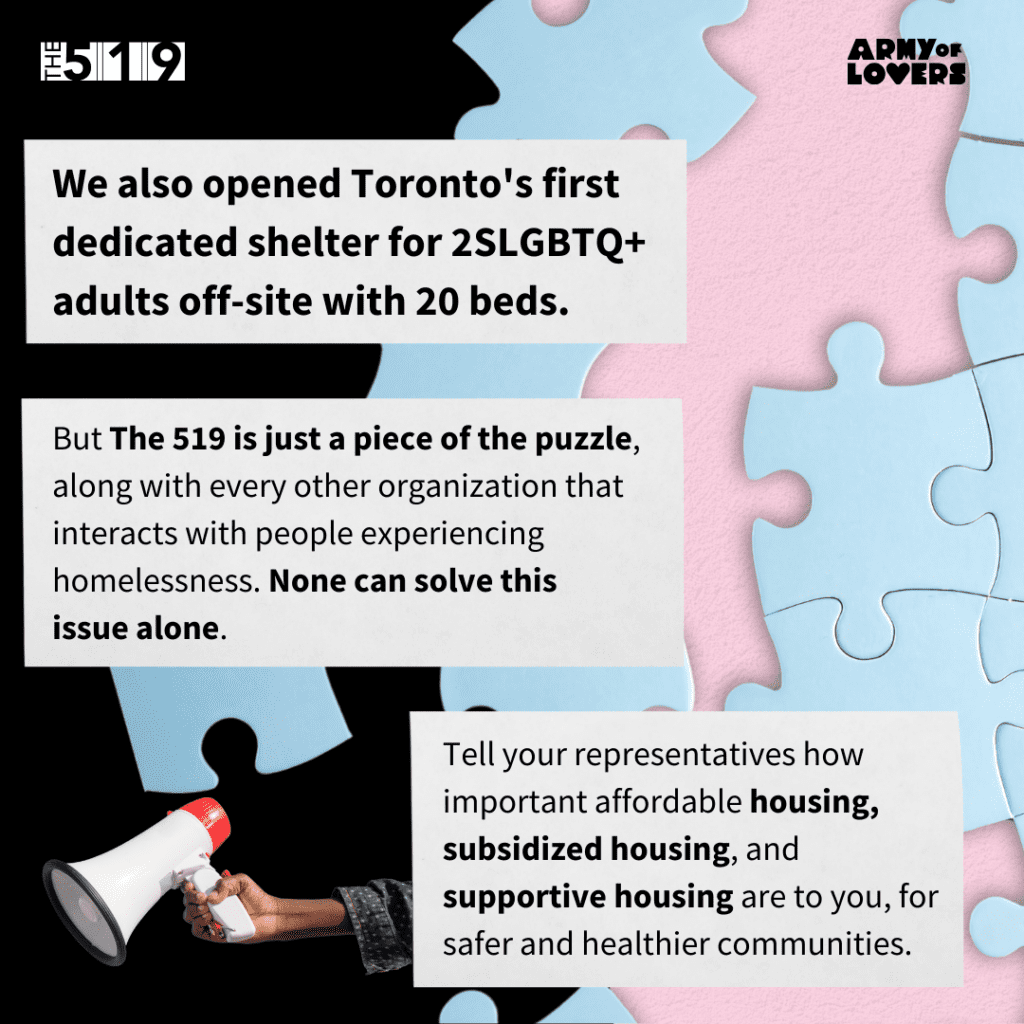Housing is a human right.
Many of us are paying the cost of higher and higher rents. For many, stable housing is out of reach, even with a stable income. Housing precarity impacts us all, with 48% of Canadians being $200 or less from bankruptcy. This includes the 29% who are already unable to pay their debts. (IPSOS, 2019)
Addressing the issues that exacerbate homelessness is in all of our interests. Improving and increasing access to affordable housing keeps our neighbourhoods safe and healthy for all, including for people experiencing homelessness.
Homelessness, Health, and Wellness.
Homelessness has many faces. It can be temporary or long-term. According to City of Toronto data, the vast majority of people experiencing homelessness live in shelters or in a mix of shelters and outside, with only a small percentage living exclusively outside.
Folks living outside are more likely to face the most layered, complex health challenges, including exposure to extreme weather conditions. They’re also the people experiencing homelessness that you’re most likely to interact with since the nature of their situation makes them really visible.
There are care options responding to the needs of folks experiencing homelessness – such as outreach nurses, mobile clinics, shelter-based clinics, etc. However, the gaps are still too wide, the barriers too high, the accommodations too sparse, and the waiting lists too long.
Advances in treatment for people experiencing homelessness are vital, but the real solution is housing. Research has shown that people experiencing homelessness see the most significant health improvements after being housed.
Don’t give up on people just because helping them isn’t always easy. Support the organizations doing this work, tell your representatives at all levels of government how important supports for people experiencing homelessness are to you, join a protest calling for supportive housing for people with complex needs and for affordable housing across the board. This is a problem that we can and must respond to together.
Realities of Homelessness .
Living relatively comfortable and stable lives can make us numb to the lived realities of people experiencing homelessness. When you see someone struggling or in crisis on the street, it might make you uncomfortable. That feeling is worth interrogating.
We tend to process such experiences in relation to ourselves and our own potential safety. This response is common and understandable. However it’s incredibly likely that person’s distress has nothing to do with us and won’t come our way at all.
People experiencing homelessness have lives with ups and downs like anyone else. They may be sleep deprived, hungry, overheated, going through a personal issue, and struggling with their belongings getting wet from the previous night’s downpour, all at once. Anyone in their position would be upset.
Practicing empathy and not immediately associating someone else’s adversity with a lack of safety for us goes a long way. The solution is more help and resources, not less. Tell your local representatives how important housing for people experiencing homelessness is – for you and for healthier neighbourhoods. Housing for all includes safety for people experiencing homelessness.
October 10th is World Homeless Day, it’s an important opportunity to take action.
Stay tuned to this page for more upcoming perspectives on this issue.



